My Experiences With Atypical Epilepsy
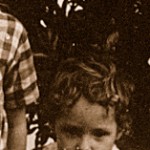 Sally Colletti is involved with Advocates for Autism (www.advocateforautism.com) and is compiling a book about Atypical Seizures. When I mentioned my diagnosis in my 20s of Atypical Epilepsy she asked me about my own experiences. Here’s our interview:
Sally Colletti is involved with Advocates for Autism (www.advocateforautism.com) and is compiling a book about Atypical Seizures. When I mentioned my diagnosis in my 20s of Atypical Epilepsy she asked me about my own experiences. Here’s our interview:
SALLY COLLETTI
Epilepsy occurs in those with a range of other conditions. What was the wider context of your Atypical Epilepsy?
DONNA WILLIAMS
When one has autism, its a fruit salad, there’s so much in there it took me and various specialists three decades to progressively identify one piece of fruit salad from another. So to differentiate or put in context my atypical seizures and how they were addressed, its helpful to list the conditions these were entangled with and the genetic and environmental backdrop to these.
I had gut, immune, metabolic disorders, mood, anxiety, compulsive disorders, visual, verbal and body agnosias (meaning blindness, meaning deafness, inability to process body feedback), neurological intergration issues (dyspraxia, dyslexia). Signs of all of these conditions appear in other near relatives. I’m the child of an alcoholic mother who was herself the child of two generations of alcoholic mothers and her father’s side has a history of epilepsy. My father’s mother was the child of a first cousin marriage the direct generation before which was another first cousin marriage. On top of this Primary Immune Deficiencies left me open to chronic infections from the age of 6 months, including Strep which appeared to trigger Tourette’s tics by age 2 and full blown measles and mumps at age 2-3. You can imagine how its hard to have in these circumstances to not be developmentally challenged in communication, interaction, play and how natural it was for someone with the associated disorientation to develop autistically.
SALLY COLLETTI
Describe your atypical seizures.
DONNA WILLIAMS
My Atypical Epilepsy was formally diagnosed after Fugues in my 20s. Fugues involved waking (and I have also woken with tics) but not being able to become quite conscious. I had had sleep disorders since at least age 2, slept with my eyes open until age 9 or so, had night terrors, sleep walking, all of that. But with Fugues these occurred in the day time when I’d fallen asleep and had semi woken but couldn’t tell if I was awake or asleep. I know that in them I didn’t respond to people or my surroundings, more like an automaton. I remember the feeling of being disoriented and at least internally in a panic (so it was like dreaming you’re in trouble, except you are actually up and walking about) so I’d leave the house (probably also because I couldn’t relate to my surroundings). I’d wander the street in search of something vague, like ‘the ocean’. Then I’d sort of fade back into consciousness and be really distressed, as if some stranger had lead me into the middle of nowhere then woken me up.
My diagnosis happened after I’d driven in a Fugue, with lights of cars expanding and blurring in front of me. I got out (I think in mid traffic) and headed for the hospital but kept walking into the glass. Staff brought me in and the examination showed my pupils weren’t responding properly and I was described as disoriented. The EEG showed ‘a highly marked central abnormality’ and I was diagnosed with Atypical Epilepsy.
I had had a related experience in my 20s where I had probably had a seizure whilst performing. I remember being overtaken by feeling physically very odd and dreamy. I exited the building but when I came out it was as though someone had turned the entire street around. Everything that had been left was now right and I couldn’t find my car and got disoriented and distressed. Someone came to my aide and found my car but with all the street somehow ‘back-the-front’ I was unable to comprehend any sense of direction or even which side of the road cars should go on.
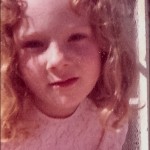 I’ve had other activity, particularly associated with dairy allergy, where background and foreground will dramatically shift places. So if you can imagine that the sky and trees swap places so you’re suddenly cofronted by the enormity of the sky which appears to be right in front of you. It was like that. I’ve also had a loss of which way is up. So imagine you’re brain suddenly starts to tilt what you’re perceiving so you’re not sure if you’re upright or if the world has tilted. I’ve had this when in a car and when walking, and it can be very disturbing. I remember this was present when I was 2 because the floor and walls would appear to alter direction.
I’ve had other activity, particularly associated with dairy allergy, where background and foreground will dramatically shift places. So if you can imagine that the sky and trees swap places so you’re suddenly cofronted by the enormity of the sky which appears to be right in front of you. It was like that. I’ve also had a loss of which way is up. So imagine you’re brain suddenly starts to tilt what you’re perceiving so you’re not sure if you’re upright or if the world has tilted. I’ve had this when in a car and when walking, and it can be very disturbing. I remember this was present when I was 2 because the floor and walls would appear to alter direction.
Later, a specialist, Dr Ed Danczak I knew through his work with immunology and neurology had spent time with me observing some of my tic and staring patterns and felt these were seizure related. I also had ‘earthquakes’ which were episodes where I’d be waking or sitting and perceived the entire room/house to be quaking violently and jerking my whole body with it. I learned that in fact these were seizures. But unlike Grand Mal seizures where you go unconscious, I remained at least partially conscious as they happened and didn’t fall. These were so indistinguishable from real earthquakes that when I experienced three real earthquakes I was unsure as to whether these were instead my seizures.
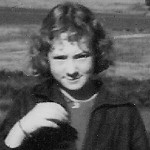 When I was thirteen, I had an episode where my arm lashed violently back and forth across my exercise book. I had a pen in my hand at the time which broke and left the book carved up and ink all over my hand. I was removed from the classroom and remember everyone looked dream like, nothing was recognisable and their speech made no sense. When I finally responded I kept saying the same phrase over and over. I think that was a seizure. A friend told me that when I was in her class from 9-12 years old I’d get this weird look, often with a grimace and then run straight into the wall crashing it over and over.
When I was thirteen, I had an episode where my arm lashed violently back and forth across my exercise book. I had a pen in my hand at the time which broke and left the book carved up and ink all over my hand. I was removed from the classroom and remember everyone looked dream like, nothing was recognisable and their speech made no sense. When I finally responded I kept saying the same phrase over and over. I think that was a seizure. A friend told me that when I was in her class from 9-12 years old I’d get this weird look, often with a grimace and then run straight into the wall crashing it over and over.
So on that basis I look back to age two where I’d suddenly run from wall to wall or strike myself over and over and although I also associate this with Rapid Cycling Bipolar since that age, I feel that both my Bipolar and Tourette’s interacted with or were exaccerbated by my Atypical Epilepsy, that sometimes the mania in the Bipolar triggered seizures.
Some types of colored lights or visual patterns or repetitive sounds could trigger acute mania and excitability and I’d get progressively more ‘tingly’, with all visual and verbal ‘meaning’ disintegrating around me, all sense of my body lost to my consciousness and eventually be squealing. These often ended in high agitation, self injury and complete disorientation often with associated distress/terror because I couldn’t recognise my surroundings, even my own hand.
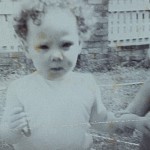 In these states I remember that when entering them I thought of it as being sucked into ‘the big black nothingness’ which I felt was sort of eating my soul, all I was, I guess my consciousness. In coming out of these I remember being frightened if my own arm or hand moved or that my body parts appeared joined to me because I didn’t recognise them as mine and was afraid of them being attached to me, moving and following me as I’d then try and rip my skin off or run away but my body followed me. I know that sounds bizarre but it took several years to get over that. But by my 20s these episodes had gone from about 6 a day to only 1 a week, sometimes only 1 a month so by then I was used to them and knew this was my body, it just didn’t seem like it. So the agnosias were definitely more extreme after such episodes.
In these states I remember that when entering them I thought of it as being sucked into ‘the big black nothingness’ which I felt was sort of eating my soul, all I was, I guess my consciousness. In coming out of these I remember being frightened if my own arm or hand moved or that my body parts appeared joined to me because I didn’t recognise them as mine and was afraid of them being attached to me, moving and following me as I’d then try and rip my skin off or run away but my body followed me. I know that sounds bizarre but it took several years to get over that. But by my 20s these episodes had gone from about 6 a day to only 1 a week, sometimes only 1 a month so by then I was used to them and knew this was my body, it just didn’t seem like it. So the agnosias were definitely more extreme after such episodes.
I’d say the episodes tended to last about 20 min. So the aura (the tingling, the excitability, the progressive loss of meaning) would start, followed by an acute phase of what was probably only about 3-5 seconds, and then the fading back in part involving disorientation and distress, then a sort of feeling like you’ve just woken up. Sounds strange but that part is a good feeling, it’s a dreamy, drifty feeling, perhaps a bit like being mildly stoned but it has been very peaceful. It’s very distressing to experience the sudden stripping away of your mind, your ability to make sense of the world or to make sense, but it’s actually quite nice to experience yourself as having no clear thought. It’s restful. Then of course others try and pursue you with experiences, blah and get you to think and do again! You can see why responding ‘autistically’ to such demands would be very understandable.
SALLY COLLETTI
What makes them atypical?
DONNA WILLIAMS
Well, I’m not an epilepsy expert so I can only answer as a patient. Typical seizures are perhaps less ‘psychiatric’ looking. So with my seizures it’s easier to mistake the person for psychotic or disturbed, especially if the episodes are very regular. Then in between people wait for the ‘disturbed person’ to flip out again. Typical epilepsies, like Grand Mal seizures involve loss of consciousness and falling down. Mine involved altered or diminished consciousness with repetitive movements but no dropping down. Petit Mal seizures genrally involve rapid blinking or staring spells. I’ve had those, particularly the staring spells, and I was tested for Petit Mal seizures but that EEG was clear.
It is possible to have more than one form of epilepsy and I have an aunt who had Grand Mal seizures. And her father, my grandfather who had Narcolepsy which is where you are awake and suddenly go unconscious (without dropping) then become conscious again. I have had this experience too, whilst sitting, walking and twice whilst driving (!) and had to stop driving for 3 months. When it happened, I was just there and I went ‘tingly’ and everything when black, like suddenly the lights went out. Then I was back. I think this is maybe why some people think they may have been abducted by aliens! The episodes only lasted seconds.
SALLY COLLETTI
Are they always the same?
DONNA WILLIAMS
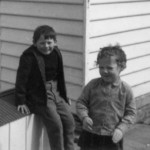 I think the run at the wall ones and the self striking stuff was consistent from age 2-12. The first time I had the earthquakes was probably when I was 23 but I haven’t had those since I was 38. I likely had fugues since early childhood but stopped having them after dietary interventions in my mid 20s. I had what may have been Narcolepsy since about late childhood but the episodes I most remember were around my 20s with the last one around age 42. I still have staring episodes and some tics I think are related to seizure activity. I have the spatial/directional thing happen now and then, very rarely, maybe only once every few years. But if I have cow’s milk it would likey happen in 20-60 minutes.
I think the run at the wall ones and the self striking stuff was consistent from age 2-12. The first time I had the earthquakes was probably when I was 23 but I haven’t had those since I was 38. I likely had fugues since early childhood but stopped having them after dietary interventions in my mid 20s. I had what may have been Narcolepsy since about late childhood but the episodes I most remember were around my 20s with the last one around age 42. I still have staring episodes and some tics I think are related to seizure activity. I have the spatial/directional thing happen now and then, very rarely, maybe only once every few years. But if I have cow’s milk it would likey happen in 20-60 minutes.
SALLY COLLETTI
When did they start?
DONNA WILLIAMS
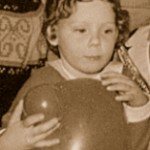 I’ve probably had seizure related issues since age 2. But there are photos of me at 12 months where I appear disoriented and like a ‘blind’ child and a photo at 3 months which looks neurologically ‘odd’ so it may be I have had these issues from earlier.
I’ve probably had seizure related issues since age 2. But there are photos of me at 12 months where I appear disoriented and like a ‘blind’ child and a photo at 3 months which looks neurologically ‘odd’ so it may be I have had these issues from earlier.
SALLY COLLETTI
How often do they occur?
DONNA WILLIAMS
Seizure activity seemed linked in to my gut, immune, metabolic disorders in which I have a high inflammatory state and experienced things like brain edema, brain fog and had high levels of the neurotoxin Quinolinic Acid apparently due to infection and undigested proteins crossing my inflammed and poor blood brain barrier.
So as I was a binge diet kid, the foods I ate changed dramatically in different years. Together with the immune deficiencies, I’m gluten and casein intolerant, have a severe dairy allergy, am salicylate and phenol intolerant, had type 2 diabetes, multiple food and chemical allergies. Some months I’d only eat bread and biscuits, others only dairy, others only high salicylate junk food stuff, others high salicylate fruits and honey and yeast extract (Vegimite, Marmite). So I think these exaccerbated some of the autoimmune, detox and brain nutrition side of things so when I changed a dietary phase, or moved to a different sensory or social environment the impact on information processing, overstimulation and overload would alter and with that the frequency, severity and nature of seizure activity.
SALLY COLLETTI
How were they diagnosed?
DONNA WILLIAMS
EEG
SALLY COLLETTI
Do you have hallucinations? Staring?
DONNA WILLIAMS
I’d say the ‘earthquakes’ are physical hallucinations. I didn’t so much see everything quake as I was quaking violently but didn’t know it was me so it felt like and appeared that everything else was quaking. And although perception of lights and background-foreground and direction would do strange things it was more misperceptions than hallucinations. During the staring I just felt I’d gone to sleep. People often thought I was daydreaming but I generally didn’t have any thought at all, more like mental static. But in my teens, in the staring spells, I had ‘visions’ which turned out to be things that were actually happening in other places to people I knew. I can’t explain these, but I ‘got over it’. I still have the staring, not so often, but no ‘visions’. I have sometimes found that after staring spells it is difficult to physically and mentally get started again. It’s as if the gears in my brain have shifted so I have to find them again.
SALLY COLLETTI
What remedies have been helpful.
DONNA WILLIAMS
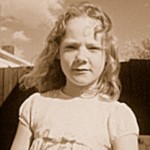 I’d start by saying Epilepsy is like Autism. Both are single words that can have very different underlying issues, causes, triggers, exaccerbators. So what worked for me wouldn’t necessarily work for someone else, but here goes…
I’d start by saying Epilepsy is like Autism. Both are single words that can have very different underlying issues, causes, triggers, exaccerbators. So what worked for me wouldn’t necessarily work for someone else, but here goes…
L-Glutamine 2000mg has lowered my inflammatory state and seemed to improve my information processing dramatically and reduced my agnosias. I’m far less meaning deaf, less meaning blind and progressively can track and process my body connectedness fairly consistently.
Omega 3s, 2000-4000mg have kept my moods level, glued together what was more fragmented perception and kept me from being overstimulated.
Vitamin C, 2000mg has kept my inflammatory state down.
Calcium-Magnesium and Zinc have probably helped, particularly with mood, sleep, digestion, stress.
Glutathione has helped on the immune side which helps with the brain.
Being GF/CF, low salicylate, low sugar and rotating foods to avoid increasing allergy levels helped enormously but its a ‘dietary wheelchair’. It comes down to what you want from your potential, what you want from life. And once you’re skilled you can make the food pretty good and it opened up so much more of life for me.
Dandelion Coffee for liver detox and brain edema.
Treatment for immune deficiency (immune boosters), particularly IgA deficiency which is related to inability to digest foods and tell the white cells which bugs are present. Without managing IgA deficiency the brain can be very vulnerable.
Atypical Antipsychotic medication – I’m on Seroquel, 25-50mg, quartered up and taken across the day. Atypical antipsychotics work as a mood levellers but are commonly used by those with epilepsy either in conjunction with or instead of traditional anticonvulsant drugs.
Lifestyle change – Sleep, being in a healthy and sensorily stable environment, being able to modulate how much stimulation/information I’m able to handle at a given time, being around non-toxic low-maintenance people, music, arts, having a way to work that I can pace myself and stay healthy, all of these things mattered enormously.
SALLY COLLETTI
Medications – any and is there a difference between generic and name brand like the Epilepsy Foundation is trying to check out?
DONNA WILLIAMS
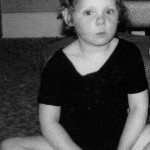 In late childhood I was put on zinc, Vit C and multivitamin-minerals and also began to eat meals which I think really helped. Re medication I was put onto antiinflammatories in late childhood to my teens and because of my immune-brain relationship that may have helped, not sure.
In late childhood I was put on zinc, Vit C and multivitamin-minerals and also began to eat meals which I think really helped. Re medication I was put onto antiinflammatories in late childhood to my teens and because of my immune-brain relationship that may have helped, not sure.
All my other interventions were dietary, naturopathy and environmental interventions until my late 30s when I went onto Atypical Antipsychotics, Risperdal 0.5mg and then switched to Seroquel 25-50mg which were for mood, anxiety, compulsive disorders but also have anticonvulsant benefits.
I have used the generic brands of these and they seem just as good. But no, I haven’t been on traditional anticonvulsants. I was offered them and offered to take them alongside my other interventions but because my seizures since adulthood were so spaced out it seemed a big impact on health for the sake of these spaced apart episodes so I prefered to look at how I could manage overstimulation as a means of reducing the co-morbids and related seizure activity.
SALLY COLLETTI
Have a great day and I’m looking forward to hearing from you!
Sally J. Colletti
www.advocateforautism.com
DONNA WILLIAMS
You too, and good luck with the book.
Warmly,
Donna Williams, Dip Ed, BA Hons.
Author, artist, singer-songwriter, screenwriter.
Autism consultant and public speaker.
http://www.myspace.com/nobodynowherethefilm
http://www.donnawilliams.net
http://www.aspinauts.com
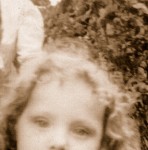

This interview about Atypical Seizures was really interesting.
That would have been the “Which way is Mitchell Street” incident.
Donna, to me, what you’re describing doesn’t sound particularly atypical.
“Mine involved altered or diminished consciousness with repetitive movements but no dropping down” – that’s a *classic* description of a complex partial seizure!
http://www.epilepsy.com/EPILEPSY/seizure_complexpartial
Unlike grand mals (and petit mal/absence), they don’t involve the whole brain. Just part of it. Most commonly temporal lobe.
And yes, can definately get confused with mental illness. Or being on drugs. In kids with autism – or adults with limited communication – sometimes seen as part of the autism, “behaviour”, “one of those things that autistic people do”.
Cleaned out my mothers house last year, found some old medical notes re me. “can’t see things in front of her”, “used to be a good student, now says she can’t read”, “walks around in circles, makes strange noises”, “seems disoriented at times, unaware of time or place”. No thought of a neurology referral, it was all bizarre behaviour, challenging behaviour, maybe psychotic… lets keep her on the Haloperadol, try behaviour a modification plan and another psych… do I sound bitter? *seizures almost killed me*. urgh.
Yes, I think do remember Dr Danczak saying he thought my issues were complex partials associated with Temporal Lobe. But in the EEG they just dx’d me with Atypical Epilepsy.
[…] out it has been known. By coincidence I received an alert to this link only the other day. Donna Williams’ Blog Blog Archive My Experiences With Atypical Epilepsy It just so happens that in my 50s I decided to ask my GP to prescribe me an anticonvulsant that is […]
Donna,
Is there any disorder you *don’t* have? “Severe” autism, atypical seizures, dissociative identity disorder/multiple personality disorder, PTSD, severe food allergies, asthma, bipolar, PTSD, “savant syndrome,” having an IQ of 70, whatever made up words you make to describe whatever you believe you are experiencing…I just can’t keep up with all of it!
It might be easier to list what is *not* wrong with you than what you believe is.
Hi Lisa,
Imagine for a moment that you were born to a father whose mother was the child of 1st cousins who in turn were the children of first cousins and whose family has a high incidence of coeliac, ADHD, bipolar, dyslexia as well as several people with agoraphobia, two dx’d with Asperger’s and two dx’d with autism.
Imagine now that someone with those challenges got with a 17 year old who had been drinking since she was 14 and was the daughter of an alcoholic mother who in turn was the daughter of an alcoholic mother, whose father was an alcoholic and where there was a family history of extremely high cancer rate, agoraphobia, OCD, mood disorders, rage and addiction. Now add poverty, lack of education to that mix.
Have this woman have you as her 2nd child in 16 months, she’s now 19, drinking heavily for 5 years, a heavy smoker. The relationship is already rife with domestic violence and the father sleeps with anyone he can.
She doesn’t want the 2nd child, so she does what many women in the 60s did when abortion was unavailable, she takes Quinine, which is known to damage the liver, harm the nervous system but cause spontaneous abortion. It doesn’t work she she tries it again. You are born, she’s probably got post natal depression, but whatever the case, she’s drinking too heavily to function and insisting nobody go into your room, pick you up, feed you, talk to you. She’s looking how to let nature get rid of the thing she got stuck with. At 6 mths you have colic, get jaundice and develop repeated infections.
Welfare sisters now look after you by day until she’s 2 and a half. By then you appear deaf, has health issues (bruises from touch, eyelashes coming out, bleeding gums). You’re sent for 3 day observation in a hospital to query deafness and leukemia. They find you are not deaf, doesn’t have leukemia, but is self injurious, so they tell your parents that at 2 years old you are already psychotic. You then get measles and mumps and develops ’emotional fits’ in which you attack yourself etc. You are later formally diagnosed with gut, immune, metabolic disorders, one of the complications of which is autoimmune disease. This means your body remains largely in an inflammatory state, causing hives, asthma, food and chemical allergies, multiple long term infections for which you’ll be on antibiotics your first 26 years. Unable to properly digest food or recognise your bugs, you can’t fully process information or build the same neurological connections others without these issues would have. Undigested proteins and bugs cross into you brain and disturb brain chemistry, resulting in mood, anxiety, compulsive disorders. Like a percentage of very young children with these health issues you are developmentally effected.
In your emotional and sensory chaos you restrict your diet to tins of sweetened condensed milk, honey and orange jelly until you are 7 and only begin to eat whole meals by late childhood when you are also put on nutritional supplements.
Your mother struggles with her own issues throughout your childhood, which meant she struggled to cope on all levels which meant abuse and neglect. She too lives with violence toward her, violence you will see for 15 years until you choose homelessness to escape it. You’ve lived with that violence since you were months old, its part of being born into that family. Some of that neglect will involve you being sexually abused at age 2 and age 9 and age 12 by visitors to your parents’ regular drinking parties. Your personality, identity and coping strategies will be formed by a combination of your sensory and cognitive chaos and an environment gearing you for survival on a daily basis.
Part of your neurological impairments is difficulty filtering incoming information so you have a memory which remembers otherwise utterly irrelevant details and does not diminish over time. Experiencing agnosias you become more highly developed in the sensory and neurological systems you can. This means that although your later IQ test demonstrates those weaknesses, it also demonstrates the exceptional skills and the result is that the lows drag the highs down, the highs pull the lows up, and your IQ is measured at 70. You don’t consider yourself severely autistic even if your IQ score in adulthood would technically put you in that group.
I hope you have now had less difficulty imagining my developmental pathway. I think if you have never grown up with this inheritance, in this environment you would struggle to imagine what its like, physiologically, neurologically, cognitively, psychologically.
I have no diagnosis of DID/MPD but have been identified by others that way, though professionals have noted PTSD. Everything else I’ve listed have been formally diagnosed throughout my life.
The gut, immune, metabolic disorders and their various complications were all diagnosed on the basis of physical tests. Physical tests even included those of neurotransmitter levels (brain chemistry relating to co-morbids) which physically demonstrated imbalanced brain chemisty as well as the production of a neurotoxin, Quinolinic Acid, associated with the immune disorder, which causes brain injury. Belief can’t cause such results.
Regarding epilepsy, it is not possible for me to believe I have epilepsy AND then cause an EEG to demonstrate ‘highly marked central abnormality’ described to me as Atypical Epilepsy. To explain, an EEG its electrodes on your head which measure brain activity. A SEIZURE during an EEG is the only way someone would get a formal diagnosis of epilepsy. The neurologists doing the EEG create a series of experiences designed to provoke seizures but these can only be provoked in those with epilepsy. Seizures show as a series of spikes which do not occur in those no epilepsy. Belief cannot make these happen. It was the provoked seizure during the EEG that got me dx’d with Atypical Epilepsy.
As immune disorders, particularly since infancy, can cause lots of health, neurological and, hence sensory, cognitive, personality differences, I can tell you that I feel I’ve done wonderfully with what I have. I can dance, sing, compose, write, paint, sculpt. I’m a good systematician and can absorb long lists and sort and categorise very well. I can listen. I can feel people. I see souls. I can care deeply. I can clean up. I’m tidy. I can get things done. I can ‘be’. Those who know me personally know my disabilities don’t diminish these many things I can do.
I would like a body that works better. If you’d like to donate some of your immune system, I’m sure I could put it to good use. Some IgA and IgG would be a good start.